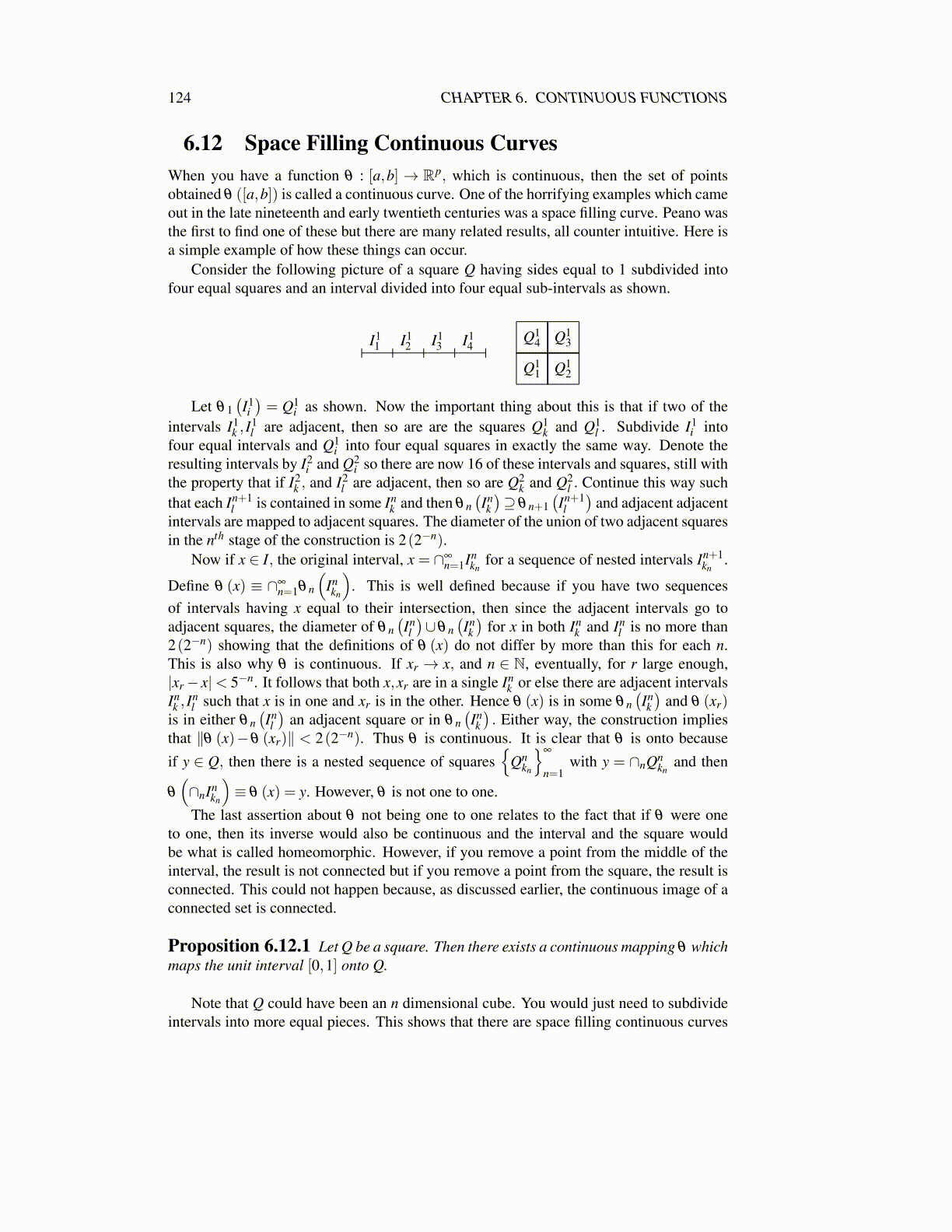
124 CHAPTER 6. CONTINUOUS FUNCTIONS
and so( 3
2
)m(
f −∑mi=1( 2
3
)i−1gi
)can play the role of f in the first step of the proof.
Therefore, there exists gm+1 defined and continuous on all of Fp such that its values arein [−1/3,1/3] and ∥∥∥∥∥
(32
)m(
f −m
∑i=1
(23
)i−1
gi
)−gm+1
∥∥∥∥∥M
≤ 23.
Hence ∥∥∥∥∥(
f −m
∑i=1
(23
)i−1
gi
)−(
23
)m
gm+1
∥∥∥∥∥M
≤(
23
)m+1
.
It follows there exists a sequence, {gi} such that each has its values in [−1/3,1/3] and forevery m 6.7 holds. Then let g(x)≡ ∑
∞i=1( 2
3
)i−1gi (x) . It follows
|g(x)| ≤
∣∣∣∣∣ ∞
∑i=1
(23
)i−1
gi (x)
∣∣∣∣∣≤ m
∑i=1
(23
)i−1 13≤ 1
and∣∣∣( 2
3
)i−1gi (x)
∣∣∣ ≤ ( 23
)i−1 13 so the Weierstrass M test applies and shows convergence
is uniform. Therefore g must be continuous by Theorem 6.9.7. The estimate 6.7 impliesf = g on M.
The following is the Tietze extension theorem.
Theorem 6.13.5 Let M be a closed nonempty subset of Fp and let f : M→ [a,b]be continuous at every point of M. Then there exists a function, g continuous on all of Fp
which coincides with f on M such that g(Fp)⊆ [a,b] .
Proof: Let f1 (x) = 1 + 2b−a ( f (x)−b) . Then f1 satisfies the conditions of Lemma
6.13.4 and so there exists g1 : Fp→ [−1,1] such that g is continuous on Fp and equals f1on M. Let g(x) = (g1 (x)−1)
( b−a2
)+b. This works.
6.14 Exercises1. Suppose { fn} is a sequence of decreasing positive functions defined on [0,∞) which
converges pointwise to 0 for every x ∈ [0,∞). Can it be concluded that this sequenceconverges uniformly to 0 on [0,∞)? Now replace [0,∞) with (0,∞) . What can be saidin this case assuming pointwise convergence still holds?
2. If { fn} and {gn} are sequences of functions defined on D which converge uniformly,show that if a,b are constants, then a fn+bgn also converges uniformly. If there existsa constant, M such that | fn (x)| , |gn (x)|< M for all n and for all x ∈ D, show { fngn}converges uniformly. Let fn (x)≡ 1/x for x∈ (0,1) and let gn (x)≡ (n−1)/n. Show{ fn} converges uniformly on (0,1) and {gn} converges uniformly but { fngn} fails toconverge uniformly.
3. Show that if x > 0,∑∞k=0
xk
k! converges uniformly on any interval of finite length.
4. Let x≥ 0 and consider the sequence{(
1+ xn
)n}. Show this is an increasing sequence
and is bounded above by ∑∞k=0
xk
k! .